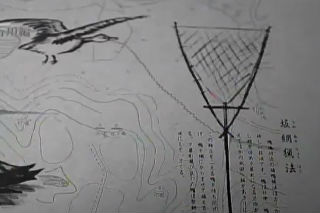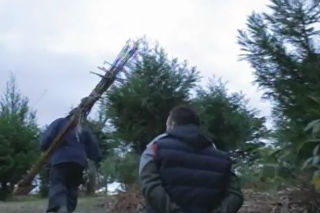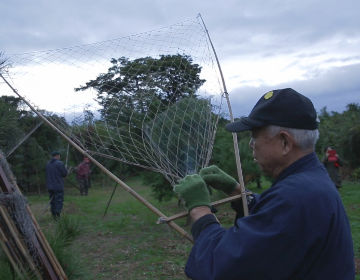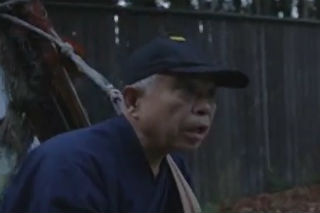 |
Hunting is a game of wit”Sakamouryo” is a traditional hunting style that dates back approximately 300 years ago to the Edo period, and is designated as Ishikawa Folk Cultural Asset. It uses a rake-like net called ”sakamou”, which is thrown over ducks that fly low over the hills of Katano Kamo Pond. Chief director of Daishoji Tokamo Hunting District Cooperative, Toyotaka Ikeda explained that one of the reasons the ”sakamou” hunting style became popular is because ”it prevented people from getting too close to the cone-shaped pond surrounded completely by mountains”. In the past, ”sakamou” hunting was encouraged for the ”samurai” for mental and physical training. ”Wild ducks instinctively know where to get their feed and in which direction to fly off to, depending on the winds, and by the waxing and waning of the moon. Hunting was always a game of wit between man and wild ducks. That is where the excitement lays .” said Ikeda. |
Cherishing the pond and the wild ducksKatano Kamo Pond was registered in the Ramsar Convention in 1993. Ramsar Convention is an International treaty aimed to preserve waterfowl and the ecosystem of the marshlands. ”We have cherished and protected the lake and ducks for a long time, from many generations ago. No matter how many ducks arrive, we only aim for one. It is in line with the guideline of the Ramsar Convention,” Ikeda told us. Hunting starts at 5:05 when it starts to get dark. Nakata accompanied them. Ducks are sensitive to light and cameras. Soon everything was silent and you could hear the rustling of the duck’s feathers as they passed by. After the hunt, the hunters gathered with their catch at the hut. ”It was interesting to watch. It really is a true game played in earnest,” Nakata commented. |
 |
|
|
Savoring fresh duck”I’ve heard people say that duck meat smells muddy, but that’s not always the case. Ducks caught during the day taste muddy, but ducks with an empty stomach are not, since they don’t have anything in their stomachs. Dusk is when it’s the best,” explained Ikeda. Approximately 300 ducks are caught by ”sakamou” hunting each year. Restaurants that serve ”sakamou” hunted ducks are limited even within Kaga. One such restaurant is Ryotei Yamagishi which serves ”sakamou” duck ”jibu-suki”, which is based on the local specialty in Ishikawa, ”jibuni”. Their ”nabe” with fresh duck meat and locally picked garland chrysanthemum is a local favorite. |
ACCESS
- Daishoji Tokamo Hunting District Cooperative
 Discovering Japan [Nihon] through authentic craftsmanship [Honmono]
Discovering Japan [Nihon] through authentic craftsmanship [Honmono]
